- Home
- Robert J. Sawyer
End of an Era Page 8
End of an Era Read online
Page 8
The one with the diamond-shaped patch of yellow skin on its muzzle — the one that spoke like me — once again did most of the talking. "We have questions for you," it said.
"What about?" I asked.
"Mars," said Diamond-snout. I looked into its huge yellow eyes with their rippling irises, almost hypnotically beautiful. "I ask you again about Mars of the future."
I shook my head, breaking away from the gaze. "And I tell you again: I’ve never been there."
Diamond-snout seemed unconvinced. "But if you ply time, doubtless you also ply space. And even if you donut" — a one-two blink — "do not, you must have magnifying optical devices that allow you to tell much about our home."
I looked at Klicks. He shrugged. "What you say is true, of course," I offered. "But without knowing what Mars is like currently here in the Mesozoic, we can’t very well describe how it differs, if at all, in our time. Surely you can understand that."
"Stop calling me Shirley," said Diamond-snout. It used my voice; it used my jokes. "Doubtless you can give us a thumb-claw sketch of Mars without us wasting time describing its current state. Do so."
"All right, dammit," I said. "You might as well know, anyway." I looked at Klicks once again, giving him a final chance to stop me if he thought I was making a huge mistake. His face was impassive. "I was telling the truth," I said, looking back into Diamond-snout’s golden orbs. "No human being has yet been to Mars — but we’ve sent some robot explorers there. They found a lot of weird chemistry in the soil, but no life." I looked at Diamond-snout. Its head had dipped low, the golden orbs with their vertical, cat-like pupils staring at the cracked mud. It was madness to try to interpret its expressions, to try to apply human emotions to a glob of jelly and its dinosaur marionette, and yet, to me, the thing looked shaken. "I’m terribly sorry," I said.
"Mars dead," said the troodon, looking up again, the reflections of the afternoon sun like little novas in its glistening eyes. "Confirm that that is your meaning."
"I’m afraid it’s true," I said, surprised at the emotion in my own voice. "Mars is indeed dead." The beast’s muscles went limp as the Het within presumably tried to digest this information. My heart went out to the being. And yet, on the other hand, if a time traveler were to arrive in 2013 from 65 million years in the future, I’d fully expect him to say that my kind had passed from the face of the Earth, too. "Look," I said softly. "It’s not so bad. We’re talking about an inconceivably long time from now."
The troodon fixed me with a steady gaze. It reminded me of Klicks’s how-dense-can-you-be look. "As said we before, our history goes back almost double that length of time. For us, it is not inconceivably distant." Again it dipped its long face, looking at the dried mud’s pattern of cracks and curled edges. "You speak of our extinction."
Klicks smiled reassuringly. "All lifeforms die out eventually," he said. "It’s the nature of things. Take the dinosaurs—"
"Klicks…"
"They’ve also been around for over a hundred million years and sometime very soon they’re going to be wiped out."
Diamond-snout’s head snapped up. The golden eyes locked on Klicks. "What?"
It was too late to stop him. "It’s true, I’m afraid," Klicks continued. "Earth’s ecosystem is about to change and the dinosaurs won’t be able to hack it."
"Soon," said Diamond-snout, the single word sounding like a hiss. "You say soon. How soon?"
"Very soon," Klicks said. "I don’t mean any day now, of course." He grinned. "But we were aiming for the point in geologic history at which the last dinosaur fossils were found. Our time-travel technology has a fundamental, unavoidable uncertainty about it. The end of the dinosaurs could be as much as three hundred thousand years in the future. Or it could be much, much sooner."
"What is planet five like?" Diamond-snout asked suddenly.
"Planet five?" I said, lost.
The yellow orbs swung on me. "Yess, yess," the thing hissed. "Fifth planet from sun."
"Oh, Jupiter," I said. "In our time, it’s pretty much the same as we think it always has been: a gas giant, a failed star." I scratched my ear. "It’s got a nice little ring now, though, which might not have existed in this time. Nothing like Saturn’s, of course, but still pretty neat."
"Jupiter … oh, see I do," said the Het. "And between Mars and Jupiter?"
"The asteroid belt, of course."
"Of course," said Diamond-snout quickly. The three troodons looked at each other, then turned, their stiff tails swishing through the air; Klicks and I had to step back to avoid being whipped by them. In unison they began to march away.
"Wait a minute," called Klicks. "Where are you going?"
Diamond-snout swiveled its pointed head back at us for a moment, but the troodons didn’t stop striding away. Giant yellow eyes closed and opened in turns as it rasped, "To attend to our hygiene."
Countdown: 13
I was soon to discover the differences between Canada and the United States. My American peers, starting out as assistant professors like me, could expect their first grants in the $30,000 to $40,000 range. I was told that National Research Council of Canada grants begin at about $2,500.
—David Suzuki, Canadian geneticist (1936– )
I was born the year Apollo 11 landed on the moon. I was forty-one when the National Research Council of Canada approached me about a time-travel mission. I’d expected our expedition to be along the lines of that moon shot: no expense spared in putting together cutting-edge technology. But there was no big money for pure science anymore — not even in the States, where most of the remaining technological efforts were concentrated on fighting the growing drought in the Midwest. It turned out that big-bucks science had been a purely mid-twentieth-century phenomenon, starting with the Manhattan Project and ending with the fall of the Soviet Union.
The scientific community hadn’t been prepared for this end of an era. But in rapid succession in the early 1990s, the planned Super-Colliding Super Conductor was scrapped, leaving a big hole in the ground where it was supposed to go. About the same time, SETI — the search for extraterrestrial intelligence with radio telescopes — was killed. The International Space Station, originally to be called Freedom, was downsized so much that people quipped it would have to be renamed Space Station Fred, since there wouldn’t be room for the full name on its side — and then, as the various national partners (including Canada) backed out, pleading empty pockets, the few modules that had been assembled in orbit were shut down. The proposed trip to Mars — originally planned for just six years from now, the fiftieth anniversary of Armstrong’s one small step — was likewise chopped. Beg, borrow, and steal became the order of the day in labs throughout the world; big government grants were a fondly remembered thing of the past.
Oh, some military money had trickled in Ching-Mei’s direction for a while. The hawks had seen time travel as strategic, making possible the ultimate in preemptive strikes. They’d provided sufficient funds for Ching-Mei to build a working Huang Effect generator, along with a good-sized power plant to run it. Why, they’d almost finished building Gallifrey — that was the code name for the prototype habitat module that ended up being the Sternberger — when the implications of Ching-Mei’s equations became clear. She’d been quite honest, telling the Department of National Defence from the outset that the amount of energy required for time travel depended on how far back you were going. What she didn’t tell them was that it was, in fact, inversely proportional to the length of time you wanted to travel.
To go back 104 million years, which seemed to be the maximum that the Huang Effect allowed (one of the equations produced a negative number after that point) required virtually no energy at all. To go back 103 million years required a little energy, 102 a little more, and so on. To cast back 67 million years, as we had done, took a huge amount of power. Any attempt to travel back into historical times, a thousand years or so, would take the entire energy output of the Earth for the better part of a ce
ntury, and to venture back into the last few decades would require the harnessed energy of a small nova.
Time travel, it turned out, was of little good to anyone except paleontologists.
Unfortunately, paleontology has never been a big-money affair. A dig, not a moon shot, became the model for what we were doing. We scraped together what equipment we could, struck sponsorship deals with the private sector, and, slashing expenses as much as possible, came up with just enough to get the two-person test mission going.
Even so, we had to watch every dollar. That’s why we did the Throwback in February, a month in which no sane person would normally visit the Red Deer River valley. Since the air temperature was already thirty degrees below zero Celsius, we saved a bundle cooling the superconducting batteries that were a key part of the Huang Effect generator.
Now that Klicks and I were ready to leave the vicinity of the Sternberger, I would have loved to have some high-tech vehicle with giant springy wheels and dish antennas and nuclear engines. Instead, we had a plain ordinary Jeep, donated because the chairperson of Chrysler Canada had fond memories of his boyhood membership in the ROM’s Saturday Morning Club. There was nothing special about this vehicle; it was just the latest 2013 model from Detroit. It even came with the optional AM/FM stereo and rear-window defogger, both of which had seemed pointless to me.
Getting the Jeep out of its tiny garage was going to be tricky. With the Sternberger high on the crater wall, the vehicle would have to be brought down a very steep incline. We were fortunate that the garage door had ended up facing northwest, pretty much over the outer edge of the crater wall, instead of back toward the bowl of the crater. The Jeep never would have been able to climb out of there, but at least we had a chance of getting it down to ground level in one piece this way.
From inside the Sternberger’s habitat, I swung open the middle of the three doors along the five-meter-long rear wall. Four steps led down to the tiny garage’s floor, and I squeezed past the left side of the Jeep and slipped into its cab.
Strapping myself in, I looked at the dashboard. I felt like Snoopy in his Sopwith Camel: I check the instruments. They are all there. I’d been practicing in this Jeep for weeks before the Throwback, but it really was true that if you learned to drive with automatic transmission, it was hard to become comfortable with manual later on. I hit the button mounted on the dash, and the garage-door opener — a standard model from Sears — slid the articulate strips of glassteel up.
From my vantage point in the cab, I couldn’t see any ground in front of me. The crater wall fell away so steeply that the Jeep’s hood blocked it from my vision. Instead, I saw the mud plain up ahead and far below. Maybe we could just walk while we’re here…
I turned the ignition key. In this heat, the engine caught immediately. If I moved slowly forward, the front wheels would roll off the edge of the hull and end up spinning freely. That would mean the rear wheels would have to scrape the chassis over the edge. The whole thing might tip forward on its nose and drop facedown onto the crater wall.
I looked up and saw the tiny figure of Klicks standing far out on the dried mud. He was holding up his walkie-talkie. I picked mine off the passenger seat and thumbed it on.
"It looks like you’re going to have to gun it," he said.
Unfortunately, that’s what it looked like to me, too. I took off the parking brake, revved the engine, and popped the clutch.
"A breathtaking sight" is how Klicks, who recorded the whole thing in slow motion, later described it. Certainly it took my breath away while I was doing it. The low gravity helped no doubt in carrying me further under my initial acceleration, but the ground came rushing up far too soon anyway, and when I hit the crater wall and began bouncing down I felt like a basketball being dribbled. My heart was racing almost as fast as the car’s engine as I rushed toward the mud flat.
The moment I was off the slope of the crater wall, I hit the brakes. Too soon! I began to skid. The Jeep’s rear end fishtailed and I saw Klicks running his ass off to get out of the way. I pulled hard on the wheel and the vehicle swung around, heading for the lake. I slammed the brakes once more, and the Jeep spun again, coming to a rest with its rear wheels in the water. I drove it fully onto the mud plain and Klicks came jogging up to me. I rolled down the window. "Going my way?" I said with a grin.
Klicks stood there, shaking his head, hands on hips. "I think I better do the driving," he said.
Well, that was fine by me: this is one trip for which I wanted the luxury of looking at the scenery. I clambered over to the passenger’s seat, he got in, and we headed off into the Mesozoic.
Countdown: 12
"My name is Ozymandias, king of kings:
Look on my works, ye Mighty, and despair!"
Nothing beside remains. Round the decay
Of that colossal wreck, boundless and bare,
The lone and level sands stretch far away.
—Percy Bysshe Shelley, English poet (1792–1822)
Given the dense foliage, we had been afraid that we’d be confined to the mud flats around the lake. But about twenty kilometers from the Sternberger we found a broad trail that had been trampled through the forest — by a herd of ceratopsians, judging by the footprints. Klicks turned onto that path, and we made our way into the highlands. We realized that the sound of the Jeep might frighten off some of the wildlife, but, then again, never having heard an internal-combustion engine before, the dinosaurs might also be attracted to the rumbling noise, wondering what strange beast had come into their territory.
We had a tape recorder going and we kept up a running commentary about what we were seeing, describing everything from the texture of the soil (firmly packed, but free of the pebbles so common in post-glacial tills), to the plants (hardwoods, lots of flowers, and a rich ground covering of ferns), to the sky (the clear bowl of earlier had given way to great towering mounds of cumulonimbus, like models of the Grand Canyon done in cotton). A Stedicam on the roof fed images into a VCR installed where the glove compartment would normally be, supplementing the images from our clip-on Micro-Cams. Also on the roof, various instruments recorded atmospheric information and strained the air for pollens that we could bring back to the twenty-first century.
After an hour, we had the most extraordinary bit of luck. There was a bend in the path where the ceratopsian herd had changed the course of its stampede to avoid a dense stand of conifers. We sailed around the curve and almost collided with what could only have been a Tyrannosaurus rex. It was easily double the size of the tyrannosaurs we’d seen the first night; a female of late years, a giant truly worthy of the name king — or queen — of the tyrant lizards.
Klicks hit the brakes. The beast, a dozen meters long, was flopped on its belly, torpid. It was apparently resting after having gorged itself on meat, for its muzzle was caked with drying blood. The giant warty head lifted from the soil and turned to face us. Rex had broad cheeks and fair binocular vision, its eyes gray and wet like pools of mercury. It let out a halfhearted roar, but it didn’t seem to feel any need either to run from us or, thankfully, to attack us. Klicks cut the Jeep’s engine and we sat there, about twenty meters away, drinking in the sight of this, the greatest hunter ever to stalk the Earth.
Some had suggested that tyrannosaurus was a scavenger, but I’d always rejected that idea. There are no purely terrestrial scavengers in the time of humans, since only birds and fish have the ability to search enough real estate to profitably find dead animals. Besides, Rex’s dagger-like teeth and bunching jaw muscles would have been unnecessary just to pick at carrion. Still, there was no carcass anywhere that we could see. I wondered why the beast wouldn’t have just taken a snooze at the site of the kill, but, after watching for a few minutes, the answer became obvious.
First one, then another, then finally a small flock of tiny yellow-and-green winged reptiles descended from the sky. They may well have been there earlier, but had been scared off by the arrival of our Jeep. The tyranno
saur opened its jaw, peeling back its thin scaly lips. Its teeth ranged from about seven centimeters long to maybe sixteen. Gobbets of flesh were crammed around the gums and fibrous pieces of meat were caught between adjacent teeth. Several of the bantam pterosaurs, wings half-folded, waddled into the great mouth and proceeded to peck at the remains of the carnosaur’s meal, cleaning its teeth and gums. One of the yellow-and-green flyers plucked out a particularly large hunk of meat and two of his friends began trying to grab it away from him. Rex snoozed on, indifferent to the squabble going on inside its gaping mouth. Other pterosaurs landed on its short back and thick tail, their beaks nipping in and out of the leathery skin like surgeon’s lances, rooting out worms and beetles that infested the predator’s hide.
This was clearly a familiar symbiosis for the tyrannosaur: we could hear a contented rumbling coming from deep in its chest. Heavy with its latest meal, Rex must have marched quite some distance from where it had killed its prey, since the pterosaurs would have had much richer pickings going over such a carcass.
We watched for over an hour, the heat mounting in the cab. Although the roof camera and our MicroCams were getting it all anyway, Klicks and I each brought still cameras to our faces and snapped off roll after roll of slides.
Suddenly I had an idea. I reached into my pack, on the floor behind my seat, and pulled out the loaf of bread we’d brought along to make sandwiches. Tearing a hunk off the crusty end slice, I rolled down the window and tossed the piece halfway between the Jeep and Rex. A couple of the pterosaurs took to the air, then fluttered back to the ground. One of them waddled over to the hunk of bread and eyed it suspiciously. After a moment, satisfied I guess that the bread wasn’t going to spit at it or something, it gobbled it up in its long beak.

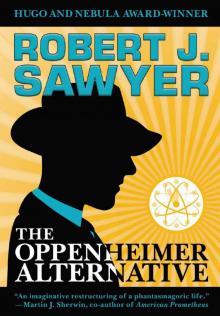 The Oppenheimer Alternative
The Oppenheimer Alternative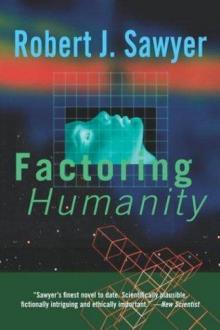 Factoring Humanity
Factoring Humanity The Shoulders of Giants
The Shoulders of Giants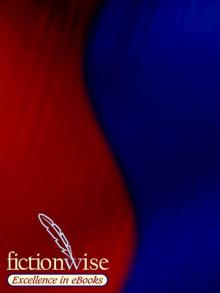 Stream of Consciousness
Stream of Consciousness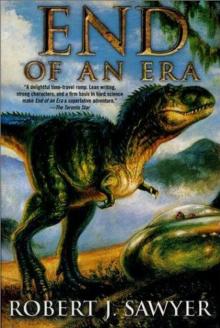 End of an Era
End of an Era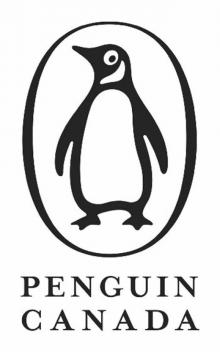 The Terminal Experiment
The Terminal Experiment Far-Seer
Far-Seer Mindscan
Mindscan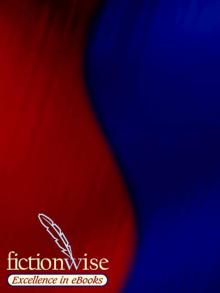 You See But You Do Not Observe
You See But You Do Not Observe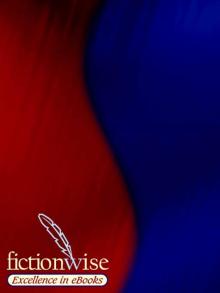 Star Light, Star Bright
Star Light, Star Bright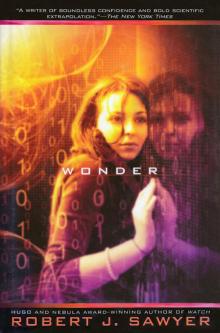 Wonder
Wonder Wiping Out
Wiping Out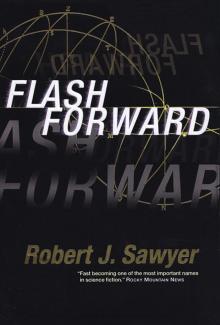 Flashforward
Flashforward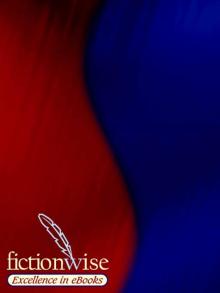 Above It All
Above It All Frameshift
Frameshift The Neanderthal Parallax, Book One - Hominids
The Neanderthal Parallax, Book One - Hominids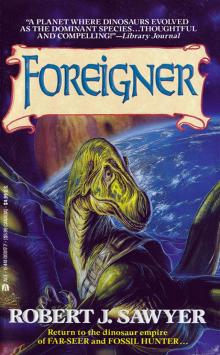 Foreigner
Foreigner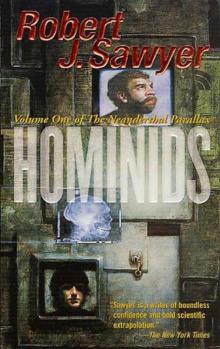 Neanderthal Parallax 1 - Hominids
Neanderthal Parallax 1 - Hominids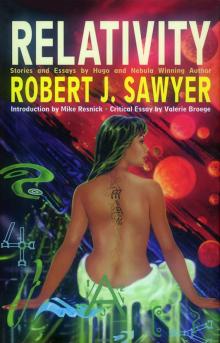 Relativity
Relativity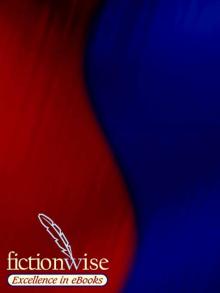 Identity Theft
Identity Theft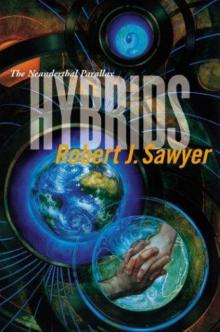 Hybrids np-3
Hybrids np-3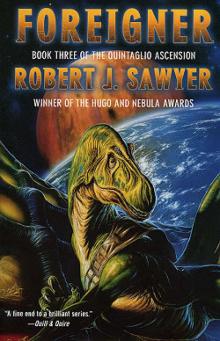 Foreigner qa-3
Foreigner qa-3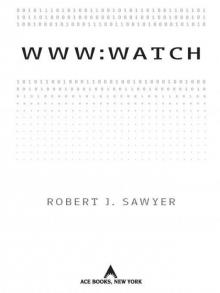 WWW: Watch
WWW: Watch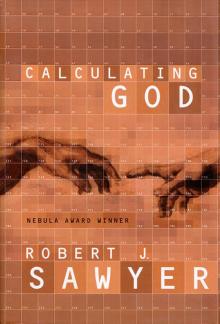 Calculating God
Calculating God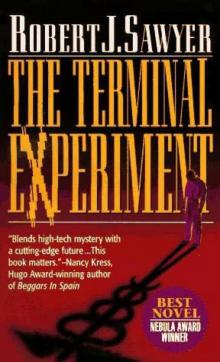 The Terminal Experiment (v5)
The Terminal Experiment (v5)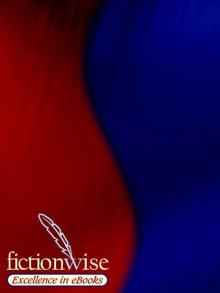 Peking Man
Peking Man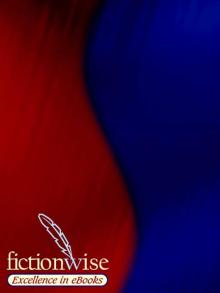 The Hand You're Dealt
The Hand You're Dealt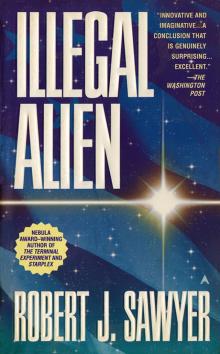 Illegal Alien
Illegal Alien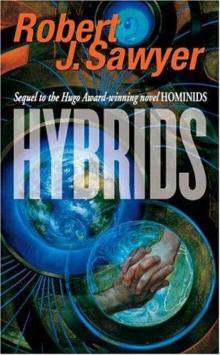 Neanderthal Parallax 3 - Hybrids
Neanderthal Parallax 3 - Hybrids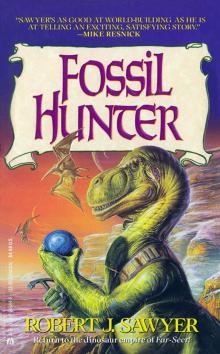 Fossil Hunter
Fossil Hunter WWW: Wonder
WWW: Wonder Iterations
Iterations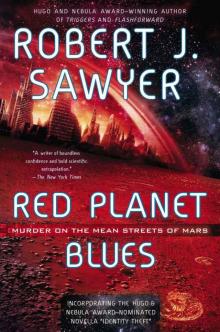 Red Planet Blues
Red Planet Blues Rollback
Rollback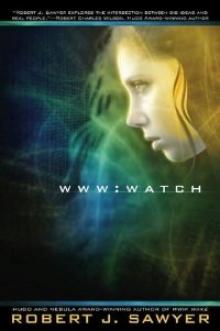 Watch w-2
Watch w-2 Gator
Gator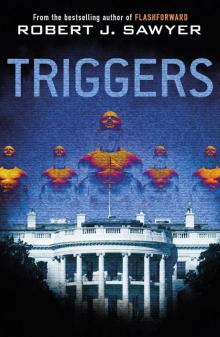 Triggers
Triggers Neanderthal Parallax 2 - Humans
Neanderthal Parallax 2 - Humans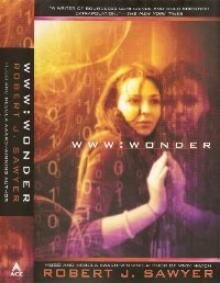 Wonder w-3
Wonder w-3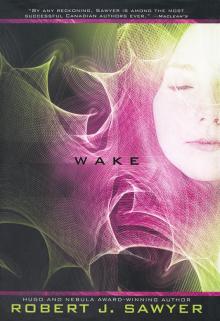 Wake
Wake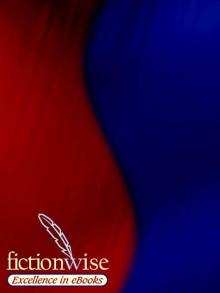 Just Like Old Times
Just Like Old Times Wake w-1
Wake w-1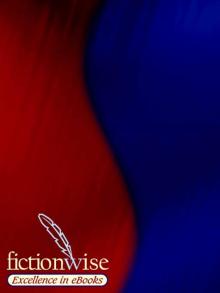 Fallen Angel
Fallen Angel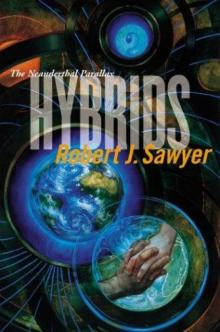 Hybrids
Hybrids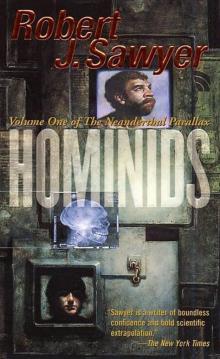 Hominids tnp-1
Hominids tnp-1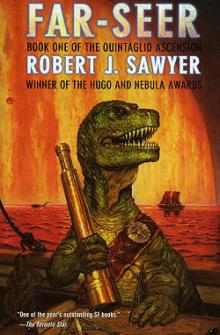 Far-Seer qa-1
Far-Seer qa-1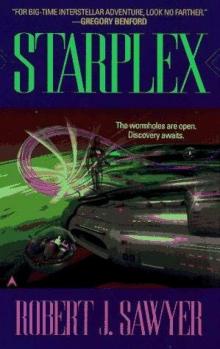 Starplex
Starplex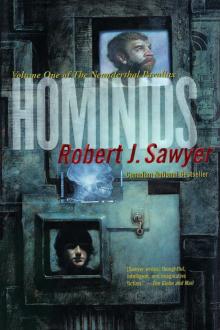 Hominids
Hominids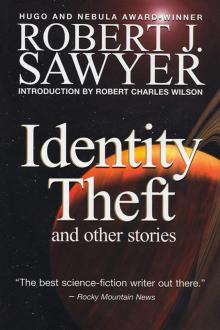 Identity Theft and Other Stories
Identity Theft and Other Stories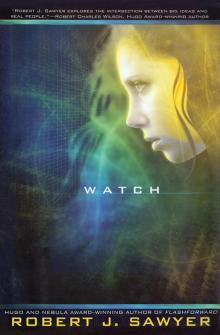 Watch
Watch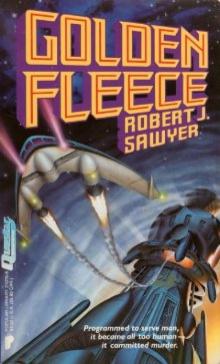 Golden Fleece
Golden Fleece Quantum Night
Quantum Night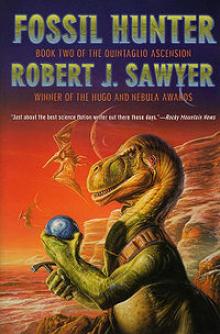 Fossil Hunter qa-2
Fossil Hunter qa-2 Humans np-2
Humans np-2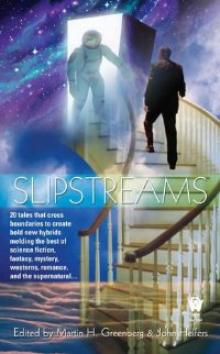 Biding Time
Biding Time